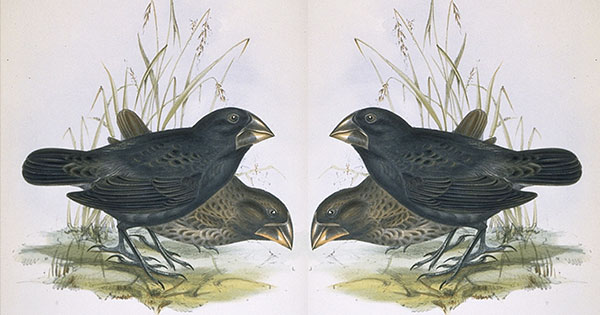
September 15 will mark the 180th anniversary of Charles Darwin’s arrival in 1835 in the Galápagos Islands, where the young naturalist collected specimens of tortoises and birds, including finches. Publication of On the Origin of Species followed in 1859, and in recent years technology has advanced far enough to make analyzing full genomes of numerous finches both feasible and affordable.
And so a team of researchers, many of them from Uppsala University in Sweden, decided to study how the differences in form and structure among Darwin’s finches are encoded on genes and how genetics can shed light on past evolutionary change. Their findings, based on the sequencing of 120 genomes in finches from the Galápagos and Cocos islands, were published in February by the journal Nature.
Much of what the researchers have found centers on a single gene—ALX1—that is associated in humans with the development of the head and face. They have shown that variation of ALX1 in finches leads to the differences in beak shape that Darwin first observed in the 1830s. Moreover, genome analysis also demonstrates that interspecies mating continued long after the various finch species evolved from a common ancestor. This “hybridization” introduced even more beak variations by mixing different versions of ALX1.
Team member Sangeet Lamichhaney believes that the question of what constitutes a species—always a contentious topic—is now further complicated. “To date,” he says, “we still don’t have any ‘best’ definition.”
Citing concerns about competitive labs, Lamichhaney, a lead author of the team’s findings, doesn’t want to say what’s in their finch-research future. He says he realized early in his studies as an evolutionary geneticist that advances in genomic sequencing would touch all areas of biological inquiry. His scientific destiny, however, may have been sealed even earlier. “For my ninth birthday, my dad gave me a cartoon storybook about Darwin’s voyages,” he says, confessing that he doesn’t recall the moment. “But my dad always reminds me.”

